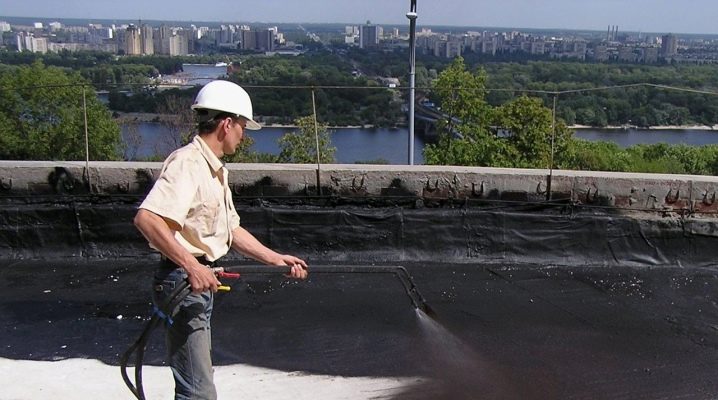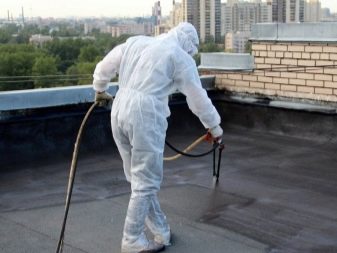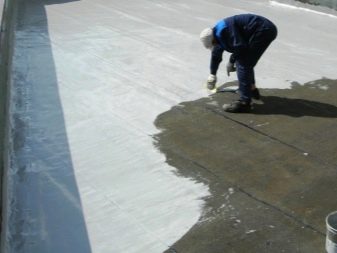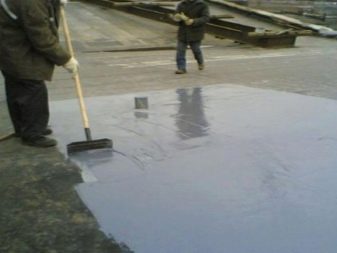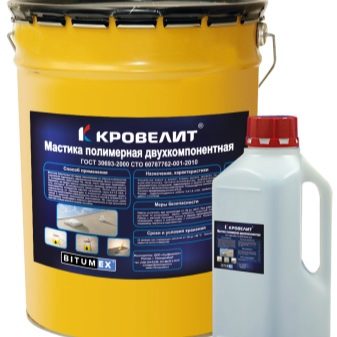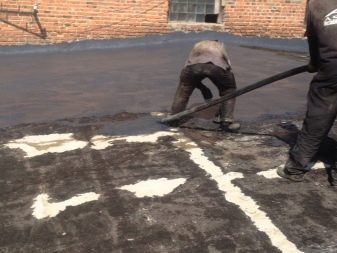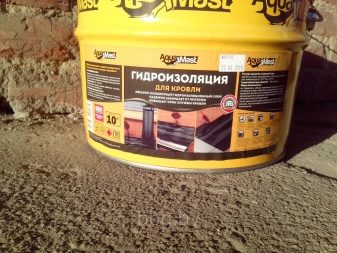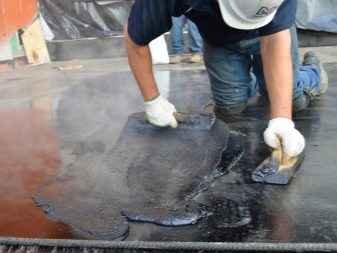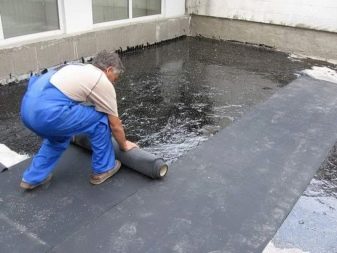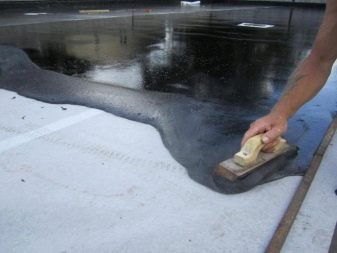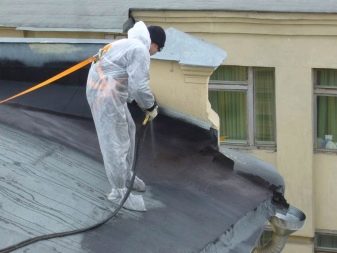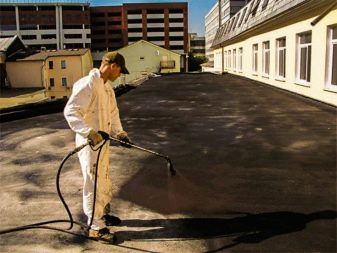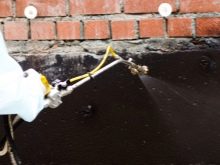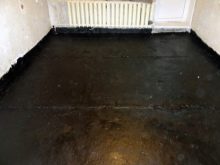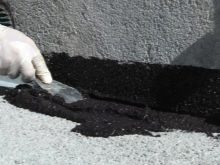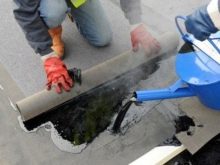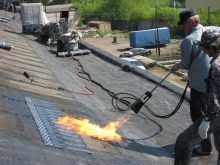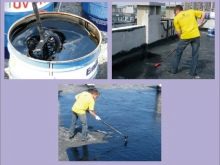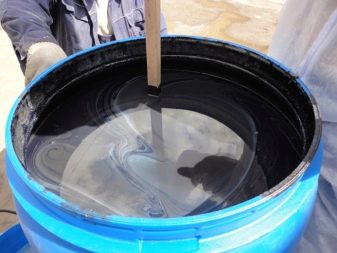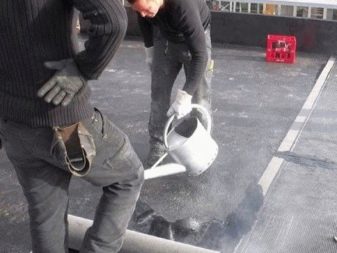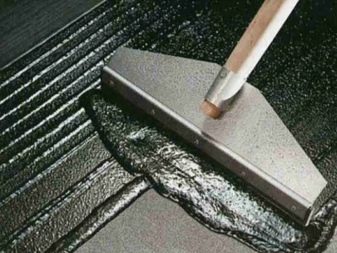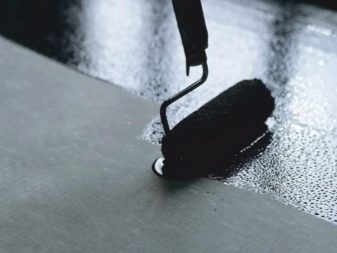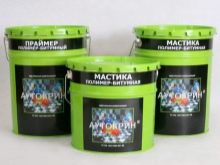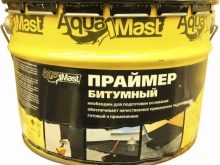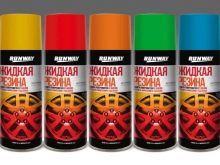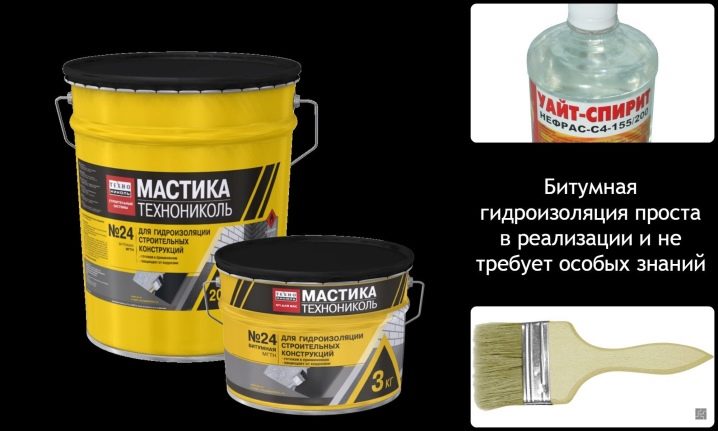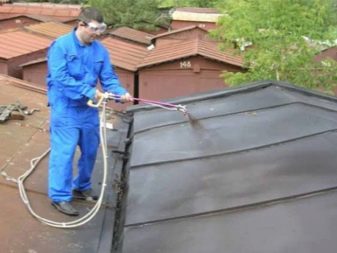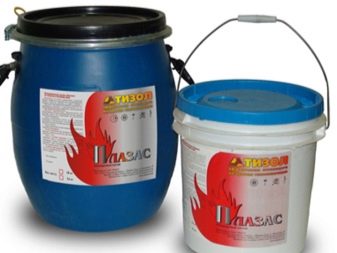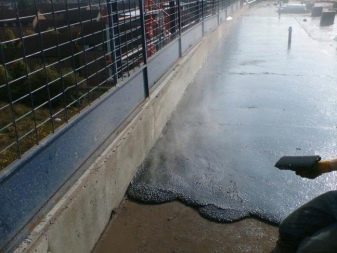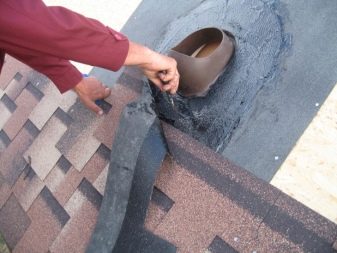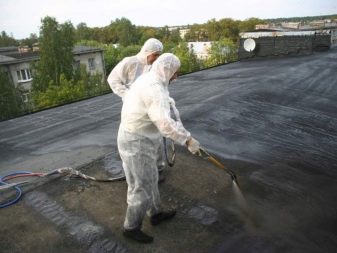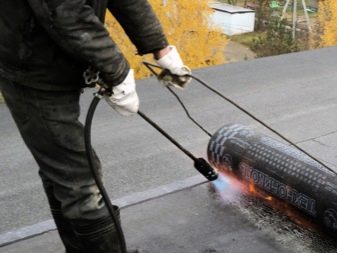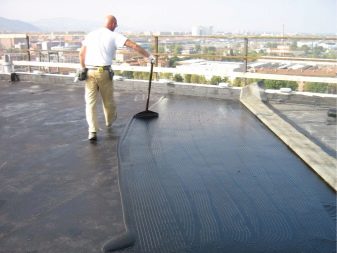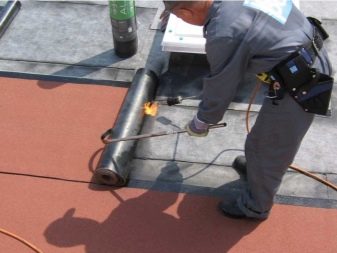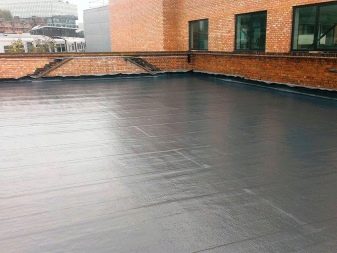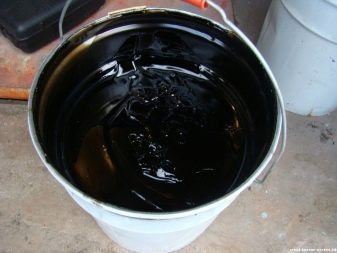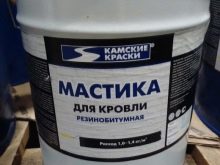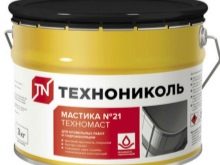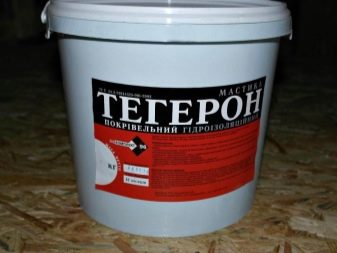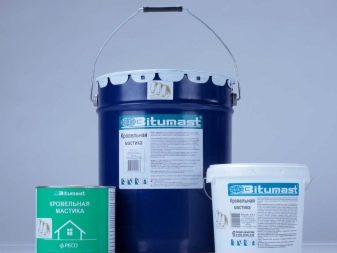Roofing mastic: material features and subtleties of use
The modern construction market offers the consumer a huge variety of roofing materials. Most of the products are the latest inventions that have unique properties and characteristics. However, in the list of products of this line there are materials whose quality has been tested over the years, due to which they are popular today, this applies to such a product as roofing mastic.
What it is?
This material is a mixture, the raw material for the release of which are astringent organic compounds and synthetic and mineral fillers. This liquid composition provides waterproofing for surfaces made of wood, metal, concrete, bricks and many modern materials, such as gas blocks.
The presence of additional components in the mastic ensures a high level of product quality., as well as such properties as ductility, rigidity and resistance to negative temperatures.
The mastic fillers are the following elements:
- talc;
- polymers;
- minwat;
- rubber crumb;
- asbestos;
- brick powders;
- recycled products - ash;
- all sorts of antiseptics.
Roofing mastic is offered to the consumer in the form of a one-component or two-component composition.
- One-component composition diluted with a solvent, it hardens naturally as a result of the gradual evaporation of volatile substances into the air. Features of the composition require its implementation in an airtight container that will provide protection against solidification. Opening the package leads to a rapid loss of the properties of the mixture. However, bitumen polyurethane products for the roof with proper sealing will not lose its qualities for about a year.
- Two-component bitumen mastic formed of two components, which are sold in separate packages. This product has a longer shelf life. This composition compares favorably with the one-component due tothe ability to adjust the thickness of the mixture by controlling the ratio of the presence of the main ingredient and the solvent in it. But competently to make the right proportion only by qualified professionals with relevant work experience.
Efficiency of operation of the composition and strict adherence to the guidelines for the application determine the final result. One-component mastic, the layer of which on the surface is about 1 mm, hardens after about 24 hours.
The rules governing the production technology of waterproofing mastic and its quality characteristics are prescribed in GOST. Therefore, each individual material must have a technical passport, which displays the name of the product with the date of issue, batch number, etc. In addition, the product contains recommendations for use, adhering to which you can get a high-quality and durable roof covering. As practice shows, the acquisition for the arrangement of roofs of bitumen mastic will reduce the cost of roofing.
Features and Purpose
For flat types of roof the range of materials for the arrangement is small.As a rule, such bases are protected from moisture with ruberoid, work with which is rather laborious. That is why the use of bitumen mastic for waterproofing is the most appropriate option, because the material is simply applied, as a result - a solid monolithic coating is formed, and a special tool is not required to complete the process.
Among the main features of the material can be identified some of its properties.
- Mastic has a viscous texture and a strong odor. Surface coating is performed using a roller with an extended handle.
- Hardening occurs during the day under the condition of warm and dry weather (meaning the drying of one layer).
- After completion of work on the roof, an elastic black film is formed, which has excellent mechanical strength, moisture resistance and frost resistance.
- Operation of the material is possible on the base of the roof, the slope of which will be no more than 30 degrees.
The bituminous mix is widely demanded and is actively used in work with a flat roof as it differs in the mass of positive technical characteristics.
The advantages of the products include the following properties:
- the main thing - resistance to moisture, during operation, the coating can withstand strong water pressure, while not collapsing;
- low cost of the whole complex of works, this concerns not only the price of the product itself, but also the characteristics of applying the mixture, where there is no need to involve a whole team of specialists
- ease of use, a similar advantage due to viscosity mastic;
- resistance to solar radiation, oxidation and corrosion.
Like most materials, bitumen mastic has some drawbacks.
- Long process of work. This is accompanied by recommendations regarding the number of layers required for waterproofing the roof. For the formation of high-quality and reliable coverage you need at least three layers, each of which will dry for about a day.
- The material is not effective for roofs with a slope of more than 30 degrees.
- Apply the majority of mastic varieties only at positive temperatures.
Since, in addition to the main fillers, additional components can be included in the composition of the mastic, the scope of application of the material is greatly expanded.
Due to this, the bitumen mixture is used for a variety of tasks.
- Products can act as an adhesive mixture, due to its heat resistance and high level of adhesion to roofing materials. Most often for such cases prefer the cold method of application.
- As floor mastic for sealing seams. As a result, a solid monolithic base is formed on the floor.
- Products for lining surfaces with ceramic products and plasterboard. Material consumption will be much smaller in comparison with adhesive formulations.
- There is a putty on the basis of bitumen, which work on the principle of putty for the repair of damaged bases.
- Anticorrosive putty resistant to chemical and abrasive effects.
Types of material
Classify mastic based on the method of its laying on the base of the roof of the building.
There are two methods for performing these jobs:
- hot method;
- cold way of laying mastic.
The first option requires compliance with a certain temperature regime: application of the composition occurs at a temperature of 70 degrees, in some cases, the indicator may exceed the mark of + 150 ° C, it all depends on the composition of the working mixture.Such technology of waterproofing with the help of bitumen mastic is possible only in the case of independent production of the composition, since it is not possible to transport it to its destination while maintaining the required temperature. Most often, such a product has a low level of quality, which is fraught with excessive material consumption.
The cold method of applying the composition is radically different from that described above. In the course of work, there is no need to be afraid of burns and accidental fire. In this case, you can perform waterproofing at temperatures up to 5 ° C. The homogeneous substance purchased in the construction department is already ready to work with the surface after opening the container. For situations in which a more liquid composition is needed, the product is diluted with a special solution. It can be kerosene, solar oil, solvent, etc. There are mastics that can be diluted with plain water.
If the application of mastic will occur in cooler conditions, some types of compositions are heated to 60-70 ° C. Bituminous mixture for cold deposition has a specific composition, through which bonding with the base at the molecular level occurs.The technology of laying the mixture requires the application of thin layers of the composition. In addition, there is no need to pre-clean the surface from various contaminants, it will be enough to remove bulky waste and vegetation.
Waterproofing compounds that do not need preheating are sold on the market not so long ago, however, in a fairly short period of time, they have already managed to show their best.
As practice shows, both methods help to get a good indicator of adhesion., despite the different technology works. Therefore, excellent adhesion is inherent in the mastic as a waterproofing material.
Based on the type of binder component, products can be divided into groups. Fillers help the composition to form a durable layer on the surface, and not to lose its properties and shape when exposed to low temperatures. The presence of fibrous fillers additionally reinforces the composition.
High-tar, rubber and polymer products are distinguished.
Taking into account the components of the mastic, we can distinguish the following varieties.
- Products with polymer-bitumen fillers.This substance has no solvents, due to which it is safe and approved for use for interior work, in particular, for waterproofing plasterboard bases.
- Bitumen Primer - is a liquid composition that is required as a basis for laying a new roofing material or is used as an adhesive mixture in the course of work on the film waterproofing on the roof.
- "Liquid rubber" and anticorrosive.
There is another classification of compositions:
- curable mixture;
- unapproved.
As for the diluent used, mastic can be of the following types:
- emulsion, water based;
- with the inclusion of organic solvents.
Water-emulsion mastic is applied in a cold way and is the most environmentally friendly material. In its composition there are rubber, bitumen and a number of components. The main advantage of such a mixture is considered the ability to perform work in enclosed spaces. In addition, due to the organic composition, where there is water, significantly reduces the time required for solidification of mastic. Latex mastic is also characterized by a minimum curing time.
On sale you can find fireproof products. This non-flammable composition is available for the device of fire belts. OKM combines well with most roofing materials. The composition is an effective protection for the roof from the effects of critically high temperatures during a fire.
Subtleties of installation
Before starting work with roofing mastic, the base of the roof must be primed. From that, how precisely all requirements to installation of mastic will be observed, its service life depends.
Based on the angle of inclination of the roof, a different number of layers of material is required:
- at an angle of 20 degrees must be applied 3 layers;
- a slope not exceeding 15 degrees does not need a large thickness of waterproofing, 2 layers will be enough;
- the roof with a tilt angle to 10 degrees assumes 3 layers.
In addition to the main area of the roof, there are parts on the building that also need good insulation from moisture. It is about endov and overhangs, which should be applied two layers of protection.
Technology work with mastic includes several stages.
- The preparatory process associated with cleaning the base.Some professional roofers are advised to wash the roof with water to remove dust.
- Next, focusing on the slope of the base, the required number of layers of the mixture.
- The technology of work is based on the method of laying the acquired composition. If mastic is chosen for hot laying, the burner is additionally prepared for operation, providing the required temperature to the material. It is very important to make sure that the previous one is completely dry before applying the new layer.
- To increase the strength of the composition, the last layer of the mixture is covered with gravel, carefully embedding it in a still fresh and not dried material.
- For combined bases, the final stage will be the painting of the surface.
- If the roof requires reinforced structures, it is necessary to use fiberglass, but without fail, taking care of safety: the skin of the hands must be protected with gloves, for the safety of the respiratory tract it is better to wear a respirator.
How to calculate the flow?
The consumption of roofing mastic depends on the type of planned work with the material, the type of waterproofing composition itself, as well as the base on which the mixture will be applied.
Most experts allocate an average consumption rate, which ranges from 0.8 to 1 kg of mastic per 1 m2 for work related to gluing raw materials. And to create a layer of waterproofing, having a thickness of 1-2 mm, you may need up to 3 kg of roofing mastic per square meter of base area.
Manufacturers
In the building supermarkets and on the shelves of the markets offer their products more than a dozen manufacturers. Almost all goods are presented in one price range and have a similar composition. Consider the brands whose products are particularly popular.
- Mastic for the roof "KrasKo". The release of this product is engaged in a Russian company, whose production facilities are located in the capital. The demand for products is explained by the affordable cost of the mixtures and the high level of quality. Most have a multi-component composition.
- The composition of the brand GidroLux has a low consumption, forms a high-quality waterproofing layer. For the most part, the company's products are represented by bitumen-polymer mixtures.
- "TechnoNIKOL" - The leader in sales in this segment. Mastic of this brand has been produced for many years and is used not only for roofing work.The manufacturer is constantly engaged in the improvement of products, due to which his product has entered the world market.
- Bitumast - mastic based on organic solvent, demanded due to the absence in its composition of toxic components.
- Mastic Ukrainian production Tegeron popular due to its low cost and good quality.
Tips and recommendations for use
In order for the applied composition to perform its functions, providing reliable waterproofing, it is worth adhering to some recommendations.
- Bitumen-latex mastic is best to cope with the work on certain parts of the roof, because its elastic properties will make it possible to fill minor defects of the foundation.
- Bitumen-rubber mastic must be purchased for the vertical sides of the roof or for the monolithic coating.
- If the surface of the roof during the operation will be subjected to mechanical stress and loads, that is, it will move along, it is worth using more durable polymer-based compounds for waterproofing.
- For objects of secondary importance (garages or outbuildings), you can buy the usual tar composition, which has a small price.
- If the work will be performed by beginners, preference is given to simple one-component mixtures, and experienced specialists will be able to easily work with more complex two-component mastics.
- Some roofers practice the use of compositions of different colors so that the thickness of the applied layers is clearly visible to the naked eye - the previous layer should not peep through the top one.
An overview of the bitumen mastic TechnoMast 21 is waiting for you in the video below.
